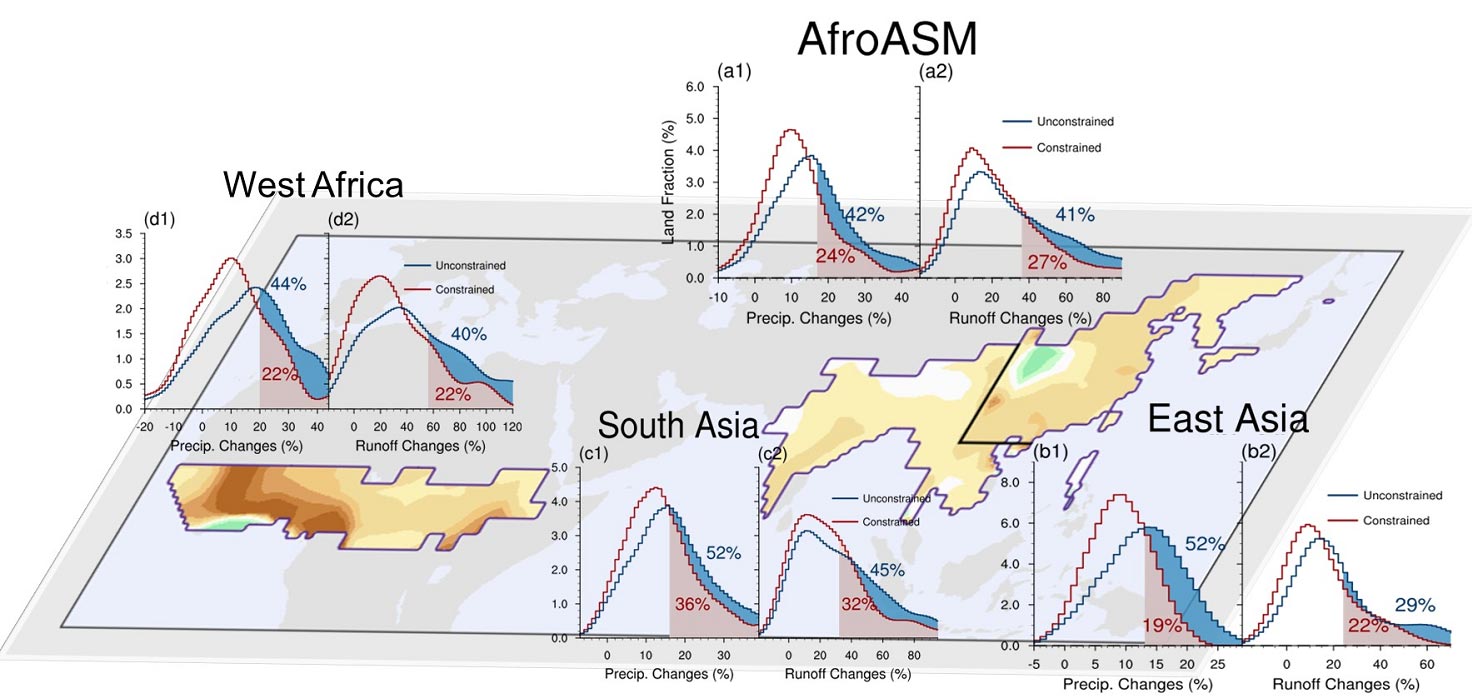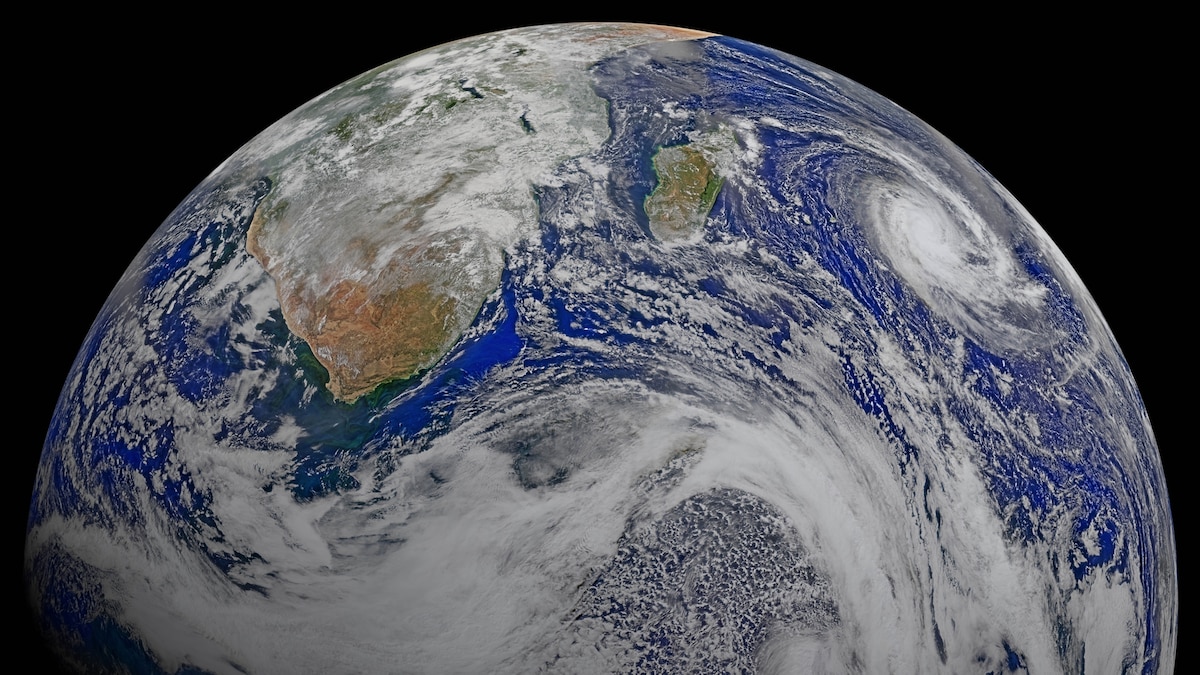
A recent analysis of the latest generation of climate models – known as CMIP6 – provides a cautionary tale on the interpretation of climate simulations as scientists develop more sensitive and sophisticated projections of how the Earth will respond to rising levels. of carbon dioxide in the atmosphere.
Researchers from princeton university and the University of Miami reported that newer models with high “climate sensitivity” – meaning they predict much greater global warming from the same levels of atmospheric carbon dioxide as other models – do not provide a plausible scenario of Earth’s future climate.
These models overestimate the global cooling effect that results from interactions between clouds and aerosols and project that clouds will moderate greenhouse gas-induced warming – especially in the northern hemisphere – much more than climate records actually show, the researchers reported in the paper. Geophysical Research Letters.
The researchers found that less climate-sensitive models are more consistent with observed temperature differences, especially between the northern and southern hemispheres. The graph shows the changes in the annual global mean surface temperature (a) and the temperature difference between the northern and southern hemispheres (b) from 1850 to 2000. The red line represents models with high climate sensitivity, while the blue line represents models with low climate sensitivity. The black line shows the observed temperature fluctuations collected by NASA’s Goddard Institute for Space Studies Surface Temperature Analysis Project, which more closely follows the blue line with respect to interhemispheric temperature. Gray backgrounds indicate years where the difference between high and low climate sensitivity models is significant. Credit: Image by Chenggong Wang, Program in Atmospheric and Oceanic Sciences, Princeton University
Instead, the researchers found that models with lower climate sensitivity are more consistent with observed temperature differences between the northern and southern hemispheres and, therefore, are more accurate representations of projected climate change than models. more recent. The study was supported by the Carbon Mitigation Initiative (CMI) based at Princeton’s High Meadows Environmental Institute (HMEI).
These findings are potentially important for climate change policy, explained co-author Gabriel Vecchi, professor of geosciences at Princeton and the High Meadows Environmental Institute and principal investigator at CMI. As more climate-sensitive models predict greater warming from greenhouse gas emissions, they also predict more severe – and imminent – consequences such as more extreme sea level rise and sea waves. heat.
High climate sensitivity models predict a global average temperature increase of 2 to 6 degrees Celsius below running carbon dioxide levels. The current scientific consensus is that the rise must be kept below 2 degrees to avoid catastrophic effects. The 2016 Paris Agreement sets the threshold at 1.5 degrees Celsius.
“Higher climate sensitivity would obviously require much more aggressive carbon mitigation,” Vecchi said. “Society would have to reduce carbon emissions much faster to meet Paris Agreement targets and keep global warming below 2 degrees Celsius. Reducing the uncertainty of climate sensitivity helps us build a more reliable and accurate strategy to deal with climate change. »
The researchers found that the high and low climate sensitivity patterns correspond to observed global temperatures over the 20th century. Higher sensitivity models, however, include a stronger cooling effect due to aerosol-cloud interaction which compensates for the greater warming due to greenhouse gases. Additionally, the models have aerosol emissions occurring primarily in the northern hemisphere, which is not consistent with observations.
“Our results remind us that we need to be careful about model results, even if models accurately represent past global warming,” said first author Chenggong Wang, who holds a Ph.D. candidate for Princeton’s program in Atmospheric and Oceanic Sciences. “We show that the global mean hides important details about temperature change patterns.”
In addition to the main findings, the study helps shed light on how clouds can moderate warming both in models and in the real world at large and small scales.
“Clouds can amplify global warming and cause a rapid acceleration in warming over the next century,” said co-author Wenchang Yang, an associate geoscience researcher at Princeton. “In short, improving our understanding and ability to properly simulate clouds really is the key to more reliable predictions of the future.”
Scientists at Princeton and other institutions have recently focused on the effect of clouds on climate change. Related research includes two papers by Amilcare Porporato, Thomas J. Wu ’94 Professor of Civil and Environmental Engineering of Princeton and the High Meadows Environmental Institute and member of the CMI leadership team, who reported on the future effect of heat induced clouds on solar energy and how climate models underestimate the cooling effect of the daily cloud cycle.
“Understanding how clouds modulate climate change is at the forefront of climate research,” said co-author Brian Soden, professor of atmospheric sciences at the University of Miami. “It is heartening to see that, as this study shows, there are still many treasures we can tap into from historical climate observations that help refine the interpretations we get of global average temperature change.”
Reference: “Compensation Between Cloud Feedback and Aerosol-Cloud Interaction in CMIP6 Models” by Chenggong Wang, Brian J. Soden, Wenchang Yang and Gabriel A. Vecchi, January 25, 2021, Geophysical Research Letters.
DOI: 10.1029/2020GL091024
The article was published in the February 28 edition of Geophysical Research Letters. The research was supported by the National Oceanic and Atmospheric Administration (grants NA20OAR4310393 and NA18OAR4310418) and the Carbon Mitigation Initiative based at Princeton University’s High Meadows Environmental Institute (HMEI).



